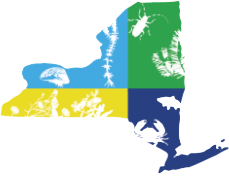Biological Invasions
Scotch broom (Cytisus scoparius) modifies microenvironment to promote nonnative plant communities
Development of a quantitative PCR method for screening ichthyoplankton samples for bigheaded carps
Differences in landscape drivers of garlic mustard invasion within and across ecoregions
Full steam ahead: direct steam exposure to inhibit spread of invasive aquatic macrophytes
Journal of Ecology
Inbreeding diminishes herbivore‐induced metabolic responses in native and invasive plant populations
Biocontrol Science and Technology
Management of Biological Invasions
Better biosecurity: spread-prevention of the invasive Asian clam, Corbicula fluminea (Müller, 1774)
Ecological Applications
Can we condition native plants to increase drought tolerance and improve restoration success?
Biological Control
Hyperparasitoids as new targets in biological control in a global change context
Small-scale dispersal of a biological control agent – Implications for more effective releases
Use of biocontrol agents as potential tools in the management of chestnut blight
Neobiota
Consistency of impact assessment protocols for non-native species
New Phytologist
Restoration Ecology
The good with the bad: when ecological restoration facilitates native and non‐native species
Effects of experimental harvesting of an invasive hybrid cattail on wetland structure and function
Natural Areas Journal
Biological Conservation
Biodiversity and Conservation
Incorporating knowledge uncertainty into species distribution modelling
Ecology
Identifying occupancy model inadequacies: can residuals separately assess detection and presence?
Habitat explains patterns of population decline for an invasive crayfish
Conservation Biology
Functional Ecology
Biological invasion: The influence of the hidden side of the (epi)genome
Ecosphere
Contribution of non‐native plants to the phylogenetic homogenization of U.S. yard floras

